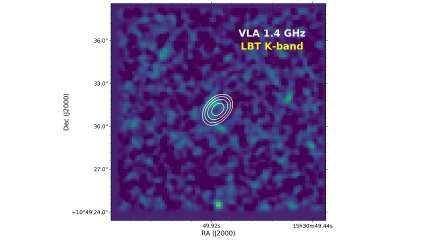Leiden Observatory
Stichting Het Leids Kerkhoven-Bosscha Fonds. The 'Leids Kerkhoven-Bosscha Fonds' (LKBF) was founded in 1954, in order to support astronomical research in general, and in particular research in collaboration with the Bosscha Observatory in Indonesia. By 1929 Leiden Observatory decided to send a telescope and permanent staff to Union Observatory. The telescope, known as the Rockefeller twin telescope, was only installed in 1938 due to delays. The South African Government provided funds for a building at the Union Observatory to.
The second building to house the Leiden Observatory (built in 1860). This building now houses part of the law faculty. Two of the optical domes can be seen on the roof. Leiden Observatory ( Sterrewacht Leiden in Dutch) is an in the city of, the.
It was established by in 1633, to house the quadrant of, making it the oldest operating university observatory in the world, with the only older still existing observatory being the. The observatory was originally located on the university building in the centre of Leiden before a new observatory building and dome were constructed in the university's botanical garden in 1860.

It remained there until 1974 when the department moved to the science campus north-west of the city. A number of notable astronomers have worked or directed the observatory including,. History 1633-1860. Drawing of Leiden Observatory in 1670, seen on top of the university building. Established the observatory in 1633; astronomy had been on the curriculum for a long time and due to possession of a large built by, requested an observatory in which to use it.
Mts driver application. Apr 30, 2012 - The MTS USB Broadband modem employs a ZTE based device driver. The MTS USB broadband internet modem fails to work out-of-the-box. Test engineers in every industry around the world prefer MTS software for its unmatched ability to speed and simplify test definition, test execution and report.
The observatory was one of the first purpose-built observatories in. Though Golius used the observatory regularly, no publications came from its use by him. It is not known whether Golius had any instrumentation other than Snellius' quadrant at the observatory.
In 1682 became professor of mathematics at the university and thus took over responsibility for the observatory. During his tenure the observatory was enlarged, including a second turret to house a brass which he purchased, and the rebuilding of the old turret.
Both turrets had rotating roofs. Upon retiring in 1705 de Volder handed over a catalogue of instruments which showed that the observatory owned two other quadrants, a 12-foot telescope, two, and several smaller telescopes. For the next two years Lotharius Zumbach de Coesfeld ran the observatory until his appointment as professor of mathematics in in 1708. Between then and 1717 the observatory went without a director until was appointed director.
During his time at the observatory, 's Gravesande purchase a number of new instruments including new telescopes and tools, before his death in 1742. 's Gravesande's successor was Johan Lulofs who used the observatory to observe in 1759 and of in 1743 and 1753 and in 1761. In November 1768 when Lulofs died, Dionysius van de Wijnpersse took over responsibility for the observatory until became its director in 1793 for a year until he died in 1794. For a number of years the curators attempted to find a suitable astronomer to look after the observatory, eventually employing Jan Frederik van Beeck Calkoen in 1799, who left in 1805.
Matus Rybak Leiden Observatory
In 1817 the observatory towers were pulled down and rebuilt. Was appointed lecturer of astronomy and director of the observatory in 1837, and again renovated the observatory, providing the towers with rotatable roofs with full shutters, and reinforcing the north-western tower. Kaiser also acquired a number of new instruments and telescopes with which he made observations including that of comets, planets,.

As a result of the increased interest in astronomy brought about due to Kaiser's popular writings and teachings, a commission was founded in 1853 to fund a new observatory. From 1859 to 1909 the was set according to the local civil time at the observatory; communicated using the network. In the early 19th Century the observatory formed a research agreement with to allow researchers use of both facilities. The first visitor from Leiden was. The collaboration lasted until 1972. Leiden Observatory in 1861 from the north-west direction. By 1860 the new observatory building was completed.
The new building was constructed in a quiet side of the city inside the university’s botanical gardens. It consisted of a number of offices, living quarters for astronomers, and a number of observing domes containing telescopes. In 1873 two new rooms were added to the building in order to house the tools required to verify nautical instruments; tools used to test compasses, sextants and other instruments. Two of the domes were rebuilt, one in 1875 and the other in 1889. More new buildings were constructed before the end of the 19th century including the Western tower in 1878, one to the East in 1898, and another small building to house a gas engine in the same year (used for electricity until the observatory was connected to the city grid). In 1896 the observatory purchased their first photographic telescope, with a dome being built to house it between then and 1898. The astronomy department moved to the science campus north-west of the city centre in 1974.

Although professional astronomical observations are no longer carried out from Leiden itself, the department still calls itself Leiden Observatory.